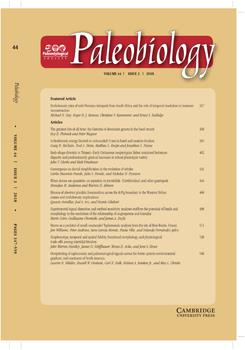Although generally considered rare in gastropods, septation has long been noted in turritellids, but functional hypotheses do not survive strong scrutiny. Here we outline a methodology for testing spandrel hypotheses and apply it to the problem of turritellid septa. We follow Gould in using “spandrel” as a term for all features that are nonadaptive sequelae of adaptive features of organisms, including those that are structurally necessary, those that are developmentally correlated, and nondeterministic by-products that are correlated to features under selection.
In turritellids, septa are constructed inmicrostructural continuity with secondary internal thickening of the shell, are highly variable features infraspecifically, and are strongly associated with degree of shell thickening. We therefore conclude that rather than being themselves adaptive, turritellid septa are spandrels of shell thickening. Turritellid septa are composed of crossed lamellar aragonite, which appears to be constructed by mantle epithelium over the visceral mass. Septation was also found in 22 of 24 gastropod families examined from a broad phylogenetic distribution. Septa thus appear to be a widespread feature of caenogastropods, in strong contrast to previous assertions that septa are less common in modern or high-spired shells.





